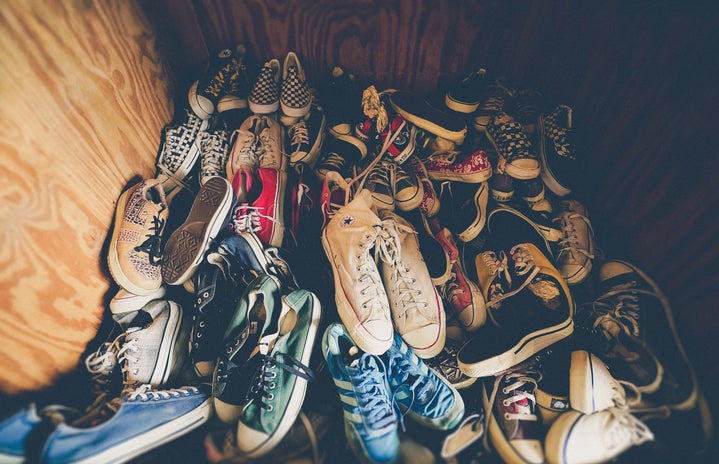India has witnessed the growing popularity of athleisure and sneaker culture over the past decade. It all began when streetwear evolved into more than just a trend, introducing itself as the mainstream fashion for younger generations. Sneaker culture in particular has become increasingly prevalent with more and more sneakerheads investing in shoes. In India, it all started in the summer of 2015 when the first Yeezy’s were introduced in Indian stores and Nike’s Air Max Day was launched the same year. Since then, India has caught onto the subculture of collecting limited-edition sneakers and luxury brands like Balenciagas and Gucci have become widely popular among the affluent crowd.
There has been a notable shift in the way we perceive clothes and shoes when just a few decades ago sneakers were worn for mere practicality and functionality. Today, we often define ourselves by the type of sneakers we collect, because the growing materialistic mindset convinces us that exclusivity and luxury equal ‘coolness’. In India, widespread exposure to trends and fashion along with the growing disposable income is making Indian consumers more aware and connected to sneaker culture. There has also been increased participation when it comes to entering in raffles to win the latest pair of kicks, and resorting to resellers for a highly sought-after pair. Can you guess why else sneakers are so expensive?
While there is nothing wrong with appreciating the fashion of sneakers, there are still some things to be wary of. The very nature of collecting objects is still materialistic and we should be cautious not to drown when we delve too deep. It is important to keep an open mind in the sneaker game and also keep moderation in mind when you’re collecting. In a capitalist world that entices consumers to cop shoes left and right, it can be hard to reject such invitations. The people involved in the marketing of sneakers know how to get us hyped so that when we start hogging and buying the latest new drops, we can wind up with a giant stack of shoes we don’t really love and won’t really wear.
By far the worst thing about sneaker culture is the thirst for inherent exclusivity which creates an innately competitive culture where the goal is to be the best and have the best. We want to have the most exclusive sneakers and this is, in a way, a real and borderline elitist understanding of whose shoes beat whose. Look at the rise of AJ1’s, for example. They’re one of the most popular sneakers and a few years ago, you could buy popular color-ways of AJ1’s at Nike stores but now they’re selling like hotcakes because of the massive hike in their demand. They are the latest trend of exclusive shoes and since resellers know this, it’s next to impossible to buy a decent pair at their original price anymore, unless you’re very lucky.
The impact of materialism has affected the younger generation of underage kids and teenagers much more than adults who are more self-conscious about budgeting. The engagement of flex culture by popular celebrities, influencers, and YouTubers where they ‘flex’ their social status through clothing is bound to have adverse effects on impressionable kids. At this age, kids are more focused on what constitutes ‘cool’ so they follow the ways of flex culture which ultimately results in social pressure to collect expensive items that their parents may or may not be able to afford. For kids, it’s not about the experience or the community of sneaker culture, it’s ultimately just a trend.
On a more positive note, sneaker culture does have some perks. I don’t wish to completely bash this subculture of athleisure because sneakers are art forms in themselves. The community of sneakerheads makes up for a meaningful experience where people appreciate the shoe and not just the social status it holds. Sneaker culture brings different people from different backgrounds together, all of whom share a common love for shoes. We only need to be cautious of what we purchase. Having a collection of kicks that we love and wear frequently is much more rewarding than having a huge stack that we don’t really care about. It’s the experiences we have with them that make it worthwhile. Copping selectively in the deluge of releases is always a wise decision.
We can, after all, appreciate the fashion and art of sneaker culture while at the same time recognizing and rejecting the capitalist notion that we must obtain the very best and most exclusive shoes to put ourselves at a higher status. The underlying difference on why we consume does matter after all.


